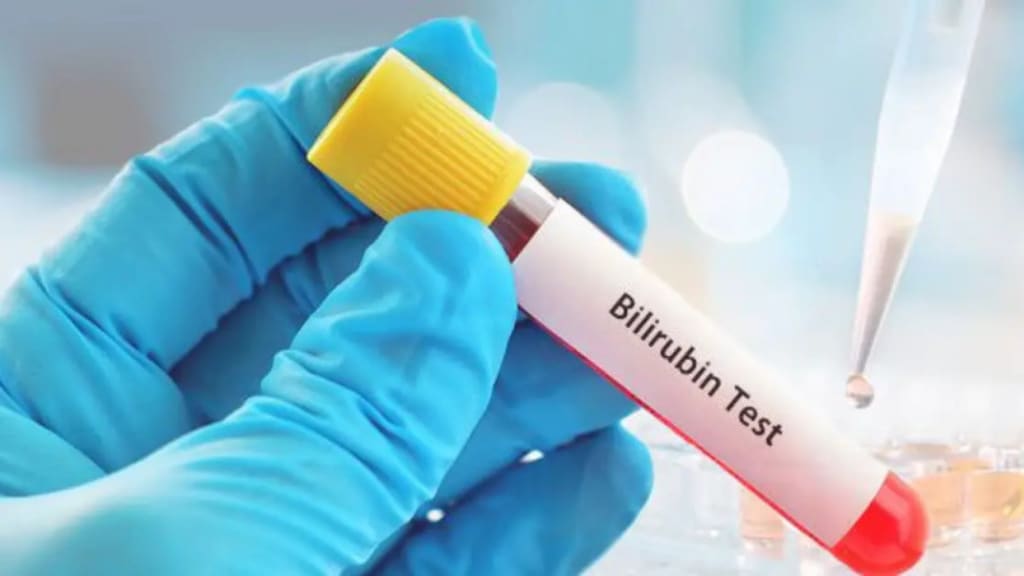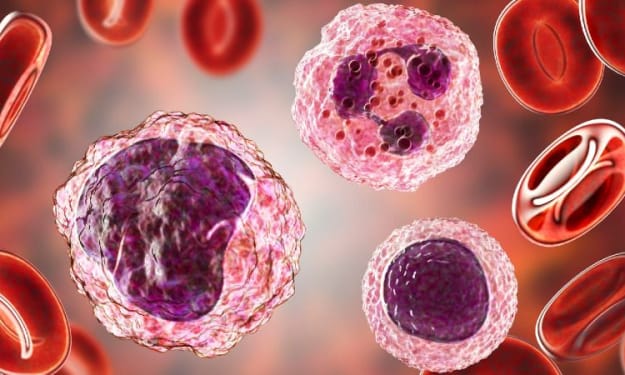Content warning
This story may contain sensitive material or discuss topics that some readers may find distressing. Reader discretion is advised. The views and opinions expressed in this story are those of the author and do not necessarily reflect the official policy or position of Vocal.
BILIRUBIN TEST
UNDERSTANDING HIGH VS. LOW LEVELS AND ITS CAUSES

Overview
Bilirubin is a yellow pigment produced when the body breaks down red blood cells. It is processed by the liver and excreted in bile. Elevated bilirubin levels in the blood can indicate liver or gallbladder problems and may lead to jaundice, a condition characterised by yellowing of the skin and eyes.
Breakdown of RBCs to bilirubinBreakdown of RBCs to bilirubin
The bilirubin test is essential in distinguishing between high and low bilirubin levels, each indicative of distinct health issues. Elevated levels may signify liver dysfunction, haemolysis, or other underlying diseases, necessitating immediate medical attention. On the other hand, low levels of bilirubin can also be indicative of specific disorders, such as coronary artery disease (CAD). The bilirubin test aids in tracking the effectiveness of treatment and guiding healthcare providers in making informed decisions about a patient’s care. Overall, the bilirubin test plays a vital role in the early detection and management of various medical conditions, ensuring timely intervention and improved patient outcomes.
What is Bilirubin?
Bilirubin is a yellow pigment produced during the normal breakdown of red blood cells. It travels through the liver, where it’s processed and eventually excreted in stools. Its presence in the blood and its levels can be important diagnostic tools.
Types of Bilirubin
Bilirubin is of two types; let’s check it out in detail.
Direct (Conjugated) Bilirubin: This is bilirubin that has been processed by the liver and is water-soluble.
Indirect (Unconjugated) Bilirubin: This form has not yet been processed by the liver and is fat-soluble.
Total Bilirubin: This is the sum of direct and indirect bilirubin.
Total Bilirubin TestTotal Bilirubin Test
The Bilirubin Test
The bilirubin test is often used to evaluate the health of the liver and bile ducts. Let’s check the procedure and result interpretations.
Procedure
The bilirubin test is a simple blood test. It’s usually part of a comprehensive metabolic panel (CMP) or liver function test. The test requires a blood sample, typically drawn from a vein in your arm.
Preparation
Generally, no special preparation is required, but fasting for a certain period before the test may be recommended, depending on the associated tests.
Understanding test results
Normal Levels:
Total bilirubin: 0.1 to 1.2 milligrams per deciliter (mg/dL)
Direct Bilirubin: 0.0 to 0.3 mg/dL
Indirect Bilirubin: 0.1 to 0.9 mg/dL
High Bilirubin Levels:
High levels of bilirubin in the blood can lead to jaundice, a condition marked by a yellowing of the skin and eyes. High bilirubin levels may indicate:
Liver Diseases: such as hepatitis, cirrhosis, or liver cancer.
Bile Duct Obstruction: Gallstones or tumours can block the bile ducts.
Haemolytic Anaemia: Increased breakdown of red blood cells leads to higher bilirubin production.
Gilbert’s syndrome: It is a common, mild liver condition that impairs bilirubin processing.
Low bilirubin levels:
Though less common and usually not a cause for concern, low bilirubin levels can occur. They are generally not indicative of a health problem and are rarely a focus of medical diagnosis.
Causes of Abnormal Bilirubin Levels
Several factors are responsible for the abnormal bilirubin levels.
Liver Function: Conditions that impair liver function can lead to increased levels of bilirubin.
Red Blood Cell Destruction: Excessive destruction of red blood cells, as seen in certain anemias, can elevate bilirubin levels.
Bile Duct Issues: Obstructions in the bile ducts prevent bilirubin from being excreted, leading to higher blood levels.
Genetic Factors: Conditions such as Gilbert’s Syndrome can affect how bilirubin is processed in the body.
As with any medical test, it’s important to discuss your results with a healthcare professional who can provide personalised insights and guidance based on your overall health profile.
THANKS FOR READING.
About the Creator
Abdullahi Alabi
I am Abdullahi by name. An expert writer with numerous years of experience. I have established myself as a prominent figure in the world of writing.
Enjoyed the story? Support the Creator.
Subscribe for free to receive all their stories in your feed. You could also pledge your support or give them a one-off tip, letting them know you appreciate their work.





Comments (1)
Hello, AI is permitted on Vocal. It is a Vocal policy that content created with AI is identified as such at the start of the story/article. Your article/story has many hallmarks of AI-assisted/generated content. You can find the details of the Vocal policy here: https://vocal.media/resources/an-update-from-vocal-on-ai-generated-content, Please amend your piece to be in compliance.